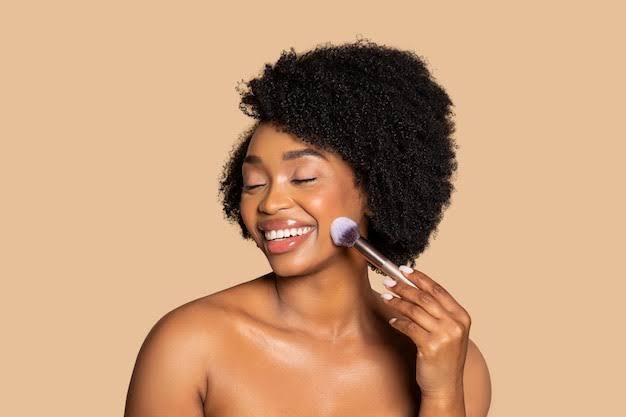Picture: Freepik
Blush has the power to completely transform your look. With just a sweep of colour, it can brighten the complexion, add definition, and create a lifted, youthful effect. But the secret to getting it right isn’t about how much you apply—it’s about where you place it.
Different face shapes suit different techniques, and by adjusting your blush placement, you can enhance your natural bone structure. Here’s how to find the right spot for your cheeks.
Blush for oval faces
If you have an oval-shaped face, the goal is to balance out the length and create softness. Apply blush directly to the apples of the cheeks and blend gently outwards. For a natural, sun-kissed finish, you can dust a little across the bridge of the nose as well.
Blush for heart-shaped faces
A heart-shaped face benefits from curved placement that complements its structure. Start by adding blush to the apples of the cheeks, then sweep it in a C-shape along the cheekbones and up towards the temples. This creates a harmonious blend that softens angles and draws attention upwards.
Blush for round faces
To elongate and add definition to a round face, focus blush slightly higher than you might expect. Apply it in line with the outer corners of the eyes, sweeping along the tops of the cheekbones. This lifts the face and adds subtle structure while still keeping the finish soft and natural.
Blush for square faces
Square-shaped faces are beautifully strong, but blush can help create balance and softness. Concentrate colour on the apples of the cheeks and blend outwards in small, circular motions. This rounder placement offsets angular features and gives a seamless, flattering glow.
The takeaway – blush isn’t one-size-fits-all. By adapting your placement to your face shape, you’ll highlight your best features and bring natural harmony to your makeup look. Whether you prefer a subtle wash of colour or a bolder flush, where you apply it can make all the difference.
Compiled by Jade McGee
First published on Woman and Home
Also see: Your beauty products might be expired, here’s how to know
